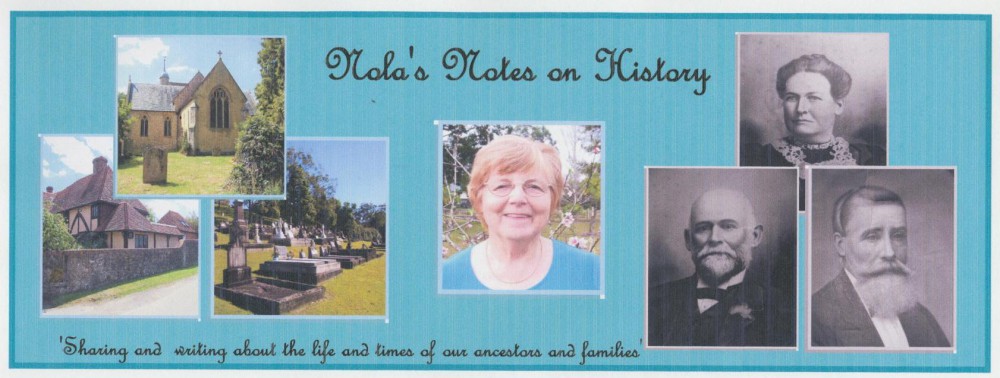Of the seventy odd publications I have written and self published, only four have had anything to do with our families. All the rest have been to assist the local community to tell their story or to assist other family historians access records to further their research. Many of the publications are available on my website ( http://www.heritagepath.com.au/ ).
However this will be changing over the next few months. I have decided to up date and rebuild my website over the coming months. A few publications will remain available and new ones will be added, but many will be removed and integrated into databases which at sometime in the future I hope to have available for researchers to access.
Some twenty years ago I spent many months extracting and indexing all the birth, death and marriage entries in some nine Sydney newspapers, copies of which have survived the ravages of time and have been microfilmed. I purchased copies of these microfilms from Pascoe and Company in Sydney.
The surviving issues of the following newspapers have been used in these indexes; Sydney Gazette and New South Wales Advertiser; The Sydney Herald; The Sydney Monitor; The Australian; The Colonist; The Sydney Times; The Australian Chronicle and The Sydney Standard and Colonial Advocate.
Not only the Birth, Death and Marriage notices but inquest reports, death reports, court reports, overseas items recorded in other countries. Many of these people are not recorded anywhere else.
This series called Index of Births, Deaths and Marriages in Sydney Newspapers covers the period 1830-1840. There are six volumes in all. Volume 1: 1830-1832;Volume 2: 1833-1835; Volume 3: 1836-1837;Volume 4: 1838;Volume 5: 1839 and Volume 6: 1840;
As you will note, the first two volumes cover three years of papers, the third volume two years, while the last three are yearly volumes. Each volume is in four sections. The first three cover the Birth, Death and Marriage Notices in each paper and the fourth section records deaths from the news columns and includes reports of death, inquests, funeral notices etc
I choose this time period because many historians were very frustrated that there were few records available for researching in this time frame, which was the last ten years of convicts and the first ten years of free immigrants into New South Wales.
Some interesting examples include:
Marriage: Volume 5 1839, p27
“ JOUBERT – BOUNEFEU, Married on 23 November 1839, at Kororarika at the Catholic Chapel, by Bishop Pompalier, D N Joubert, merchant of Sydney, to Louise Marie, eldest daughter of Piere Bounefeu.”
References- Australian, 24 December 1839; Sydney Gazette, 24 December 1839 and Sydney Monitor 25 December 1839.
Death; Volume 5 1839, p 54
“SKINNER Hughina, wife of Alexander Skinner, late Surgeon Superintendent of the government ship Lady McNaughton, and daughter of the late John Clarke, Sutherland, Scotland, died 7 April 1839, at Jerry’s Plains, Hunter River.”
Reference- Sydney Herald, 1 May 1839
Many of the libraries throughout the world, including Australia and New Zealand purchased copies of these indexes, as did many family history societies. I received hundreds of letters and emails from all over the world thanking me for compiling the indexes, as many people were able to find details of their ancestors, which they could follow up in other records if they have survived.
I published this series in book, microfiche and e-book format.
In the last few years the National Library of Australia has scanned these microfilms of each of these newspapers and digitally released them on their website under Trove, in their Historical Newspapers section. In theory this makes my indexes obsolete as the word search facilities of the National Library site makes all the records available at the press of a button.
However, as I have often stated, any family historian who relies on the computers facilities to find all their family history entries will often be very disappointed. Often many thousands of possible entries have to be sieved through to see if your family is indeed there. Also, the text recognition program used, although very helpful cannot hope to be 100% accurate. The printing of these early newspapers range from very dark and easy to read print to very faint and impossible to read. It needs the human eye to interpret those dark and smudged, as well as those faint broken text words. I have spent some forty years working with early 18th and 19th Century newspapers from all over the world, and have had much experience in working out those troublesome words.
I would use the National Library of Australia newspaper website everyday, but always consult my indexes if working in the 1830- 1840 time frame, as it saves me many hours of time. I immediately know if there is an entry, and in which newspaper I should be looking in.
Why not give these indexes a try, as you just never know, they just may solve your research problem.
